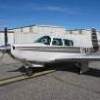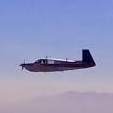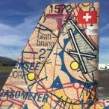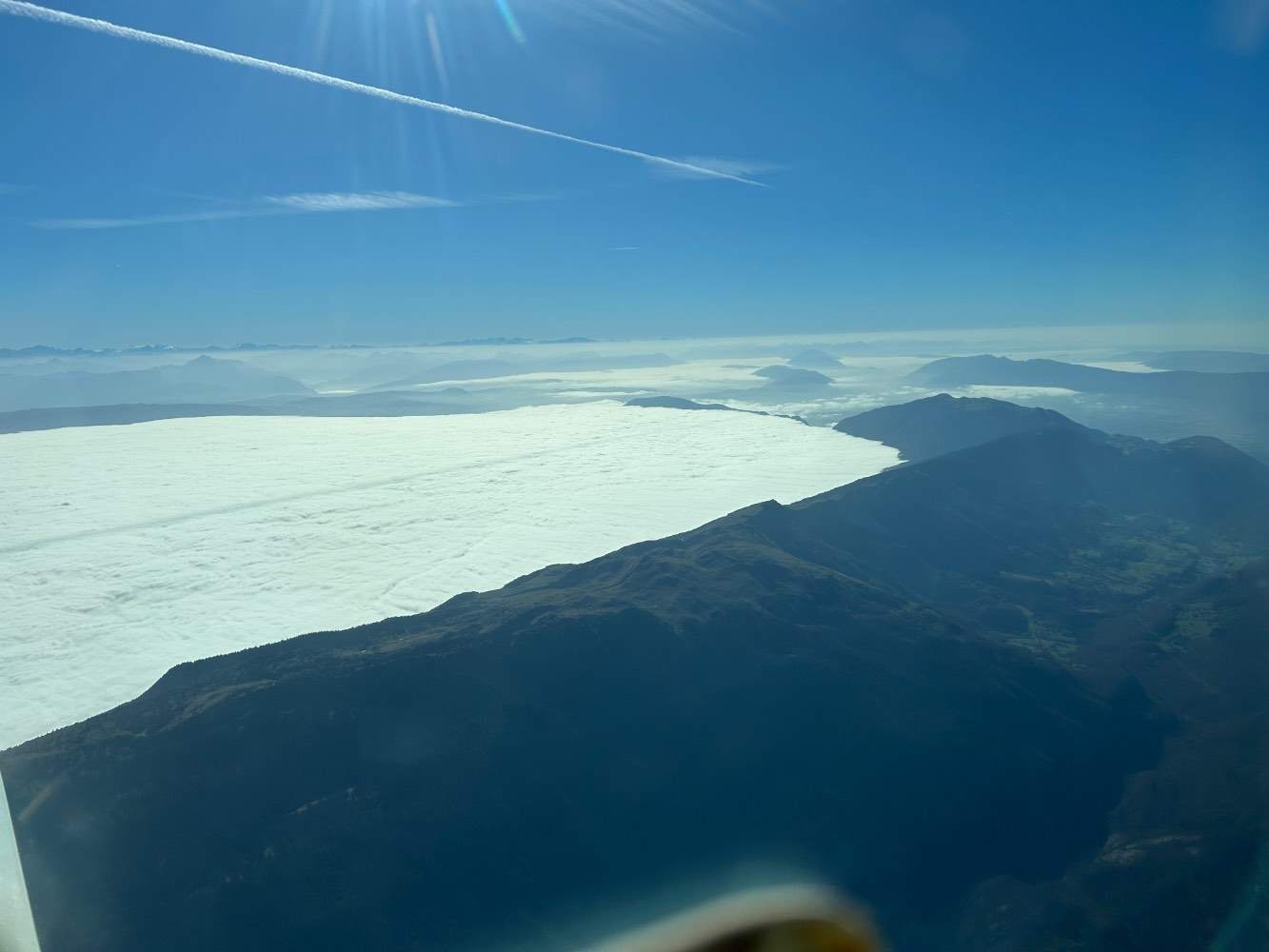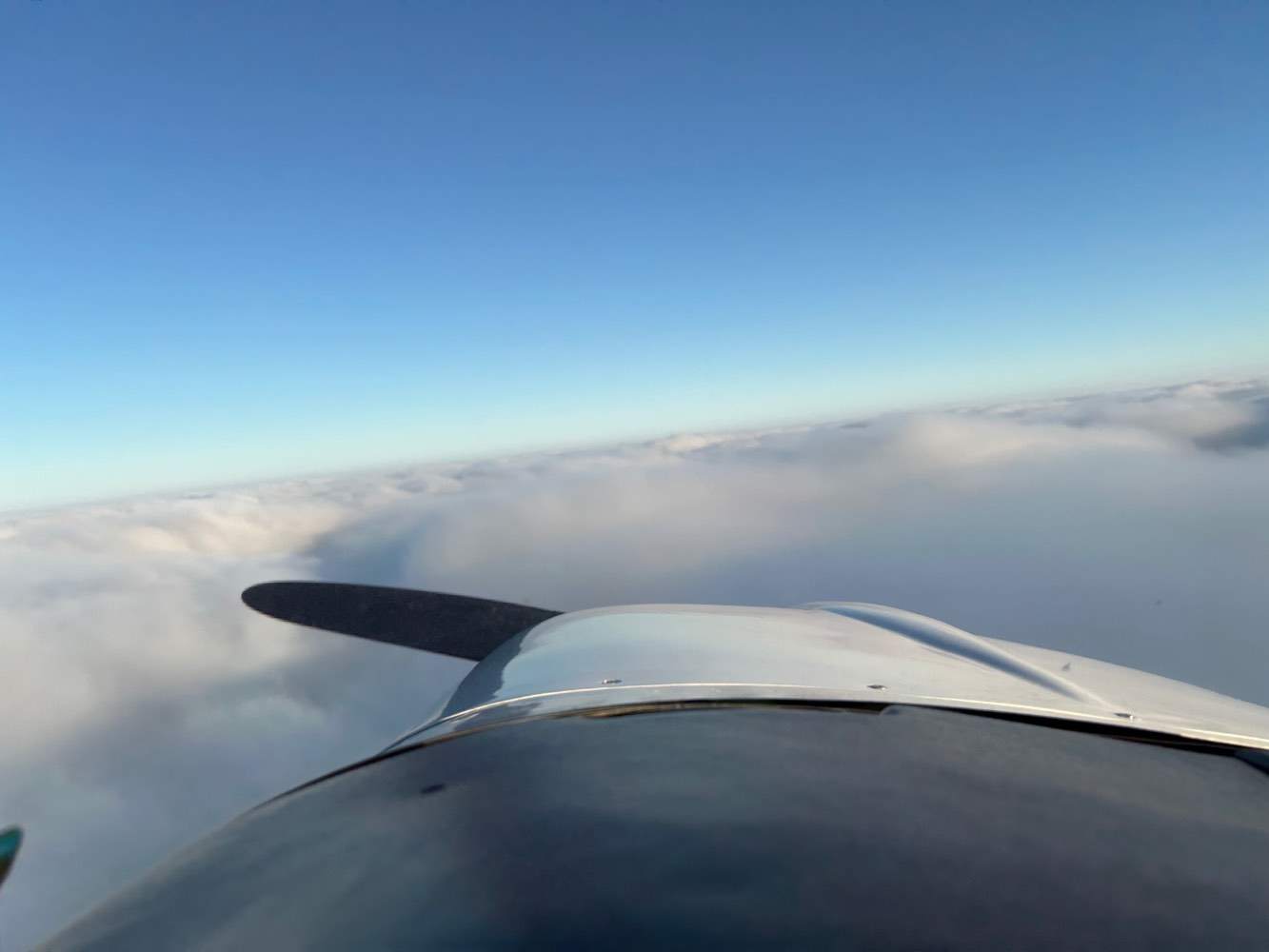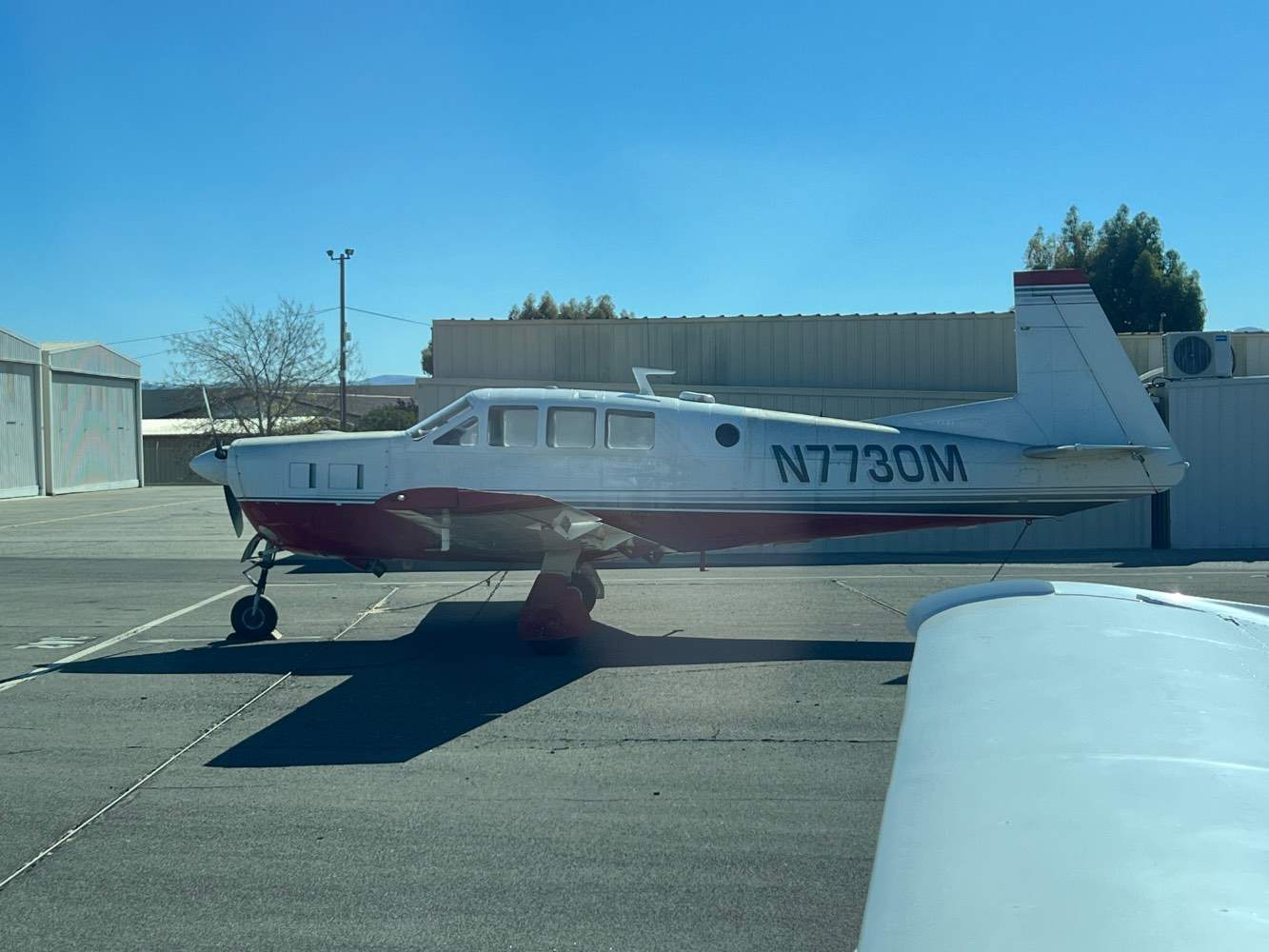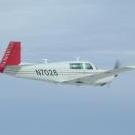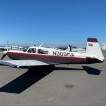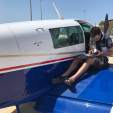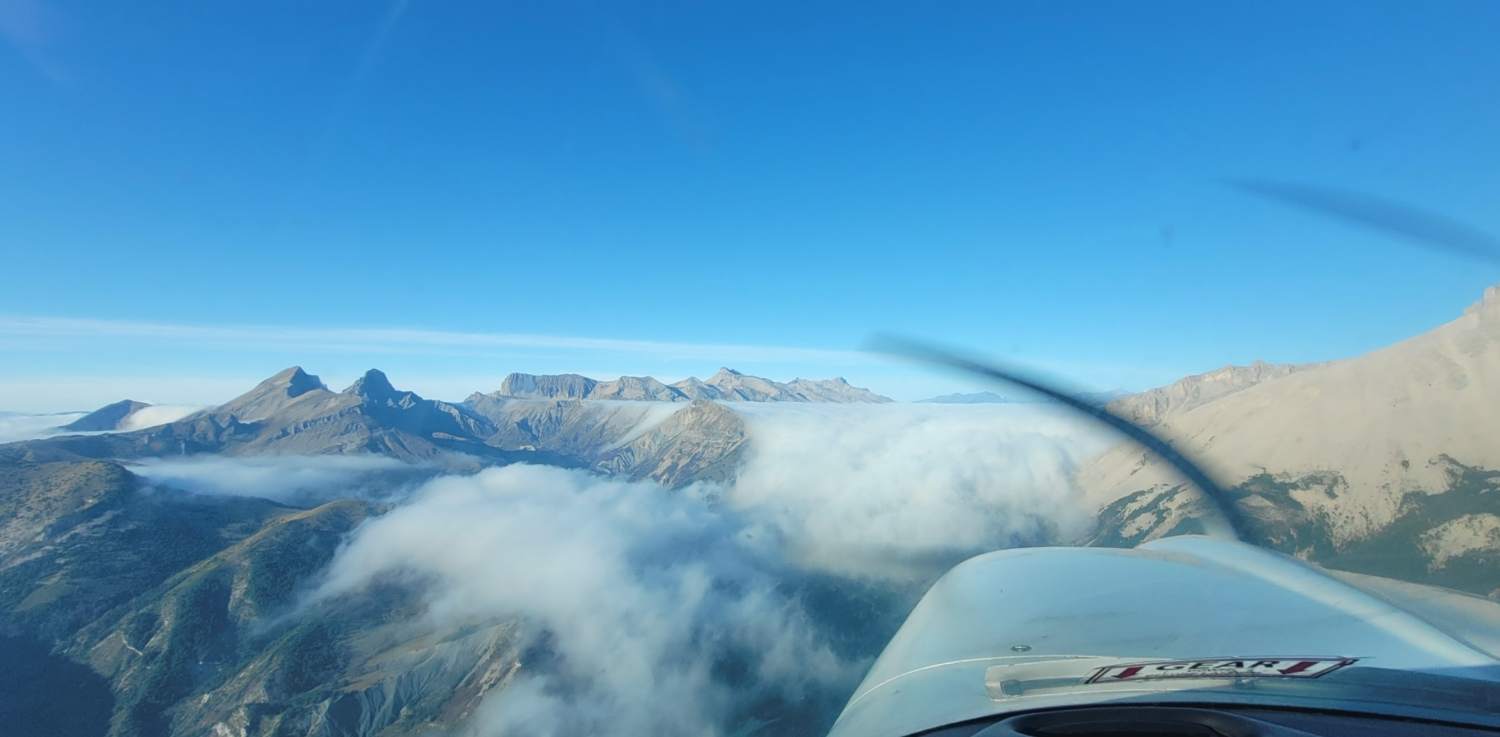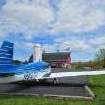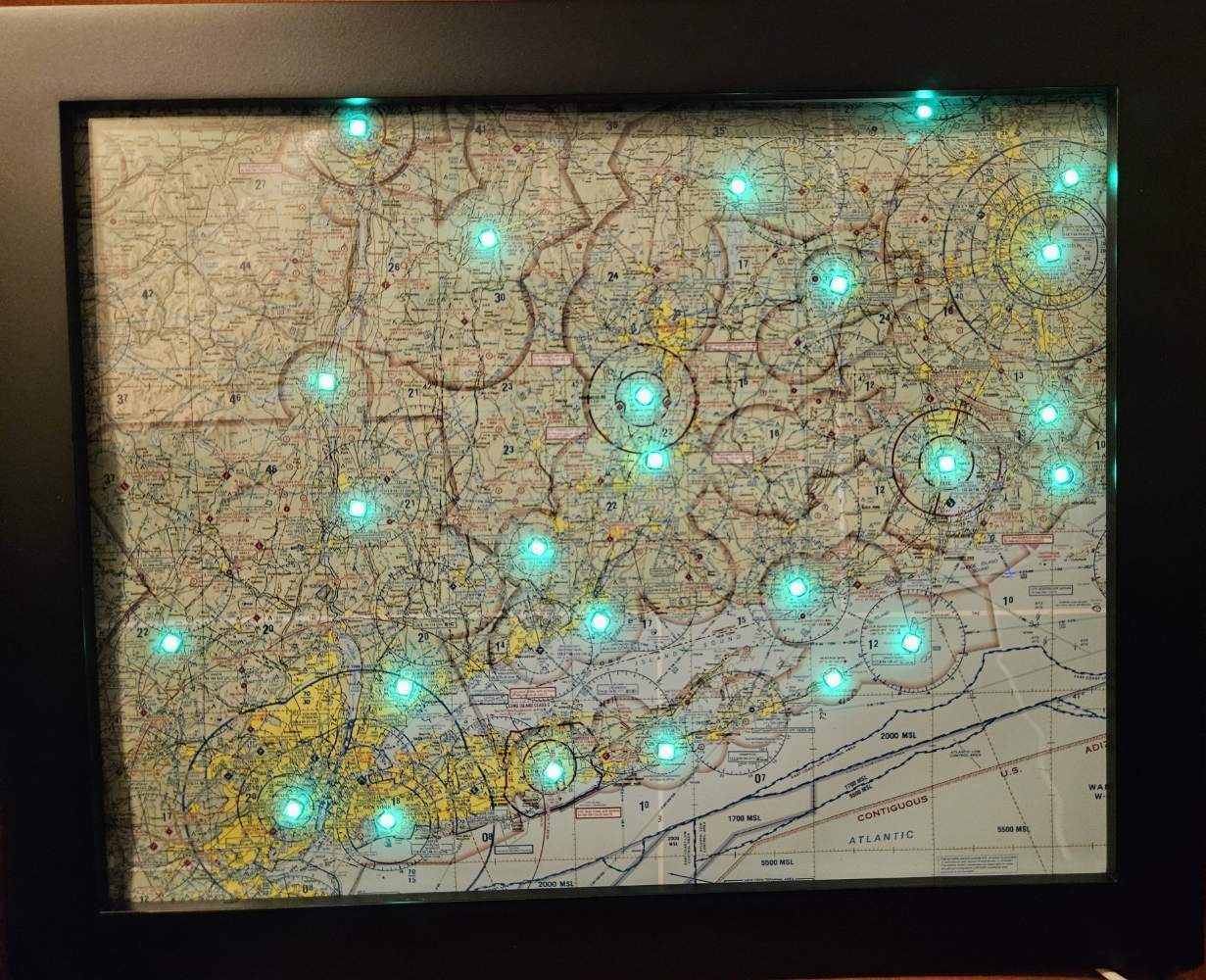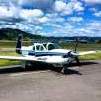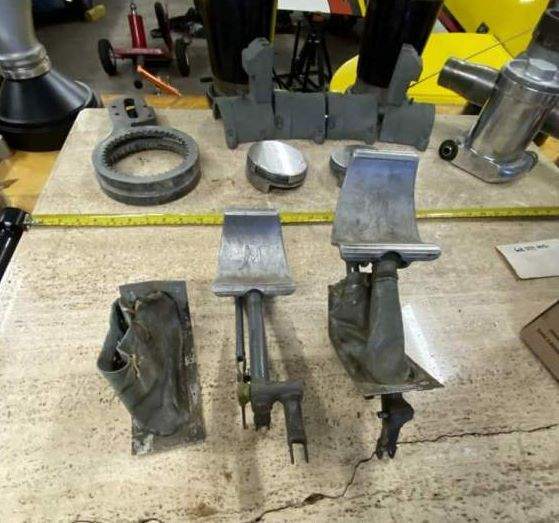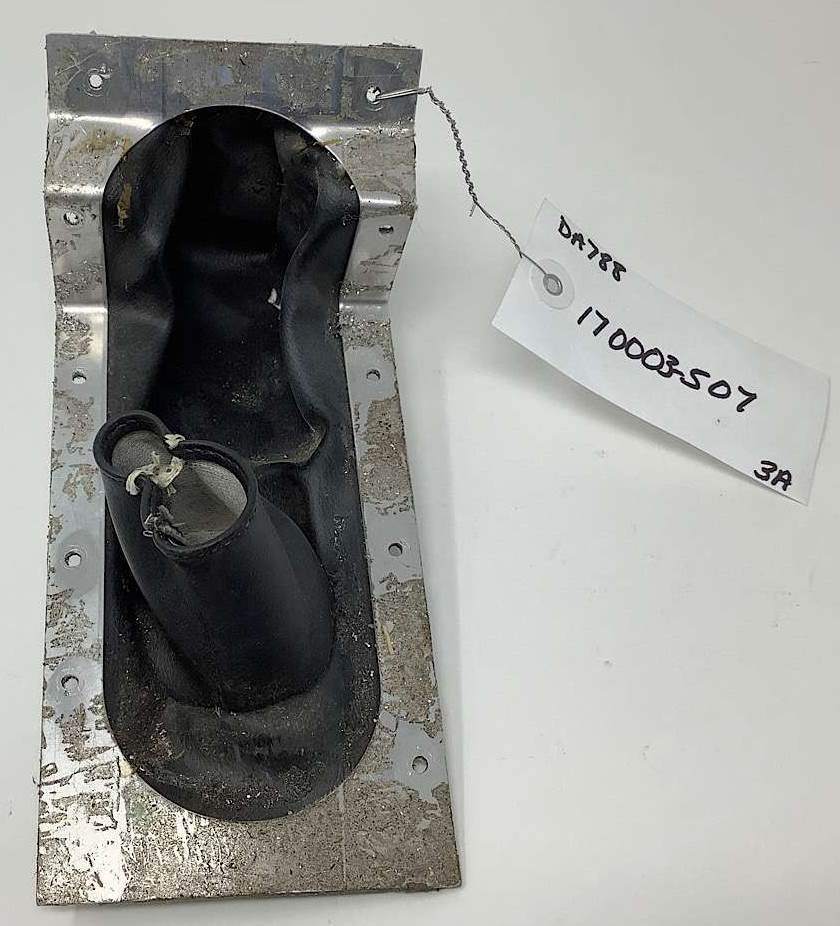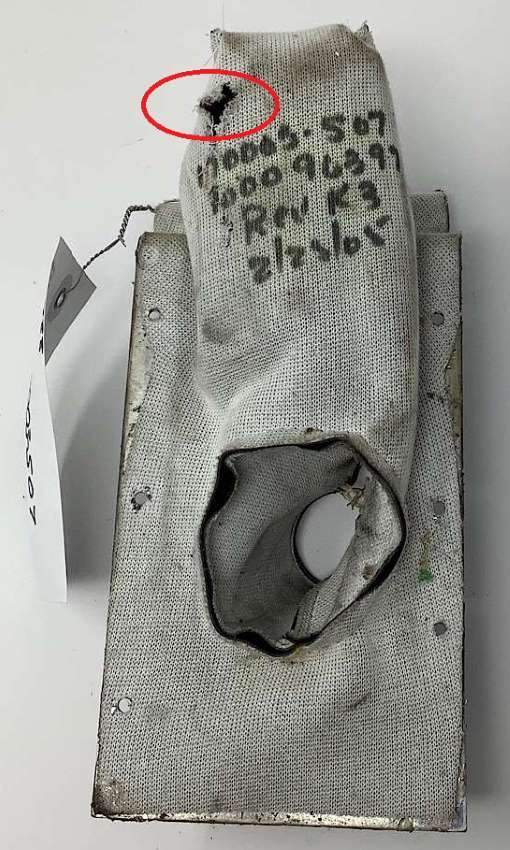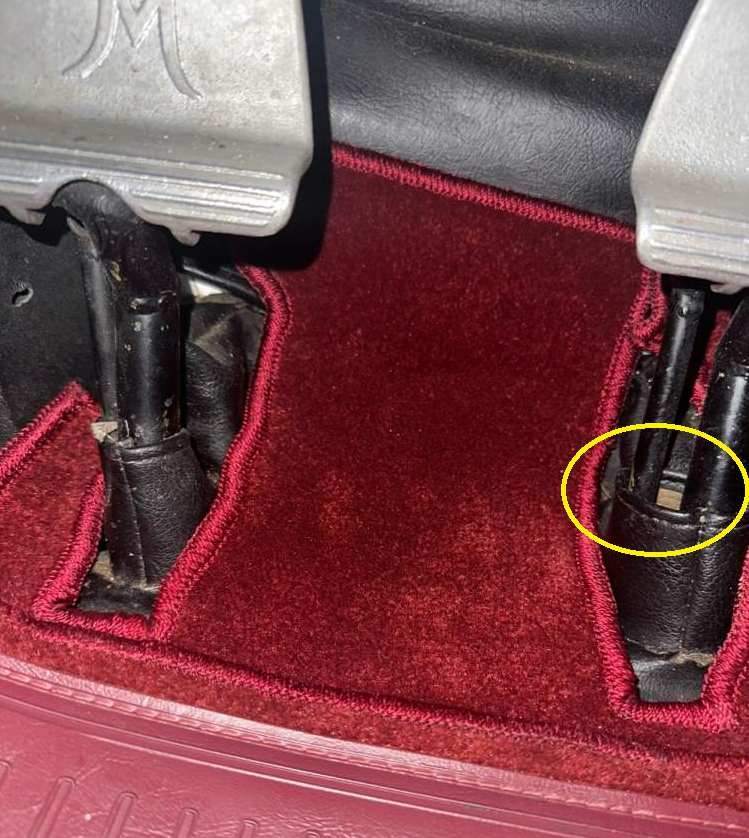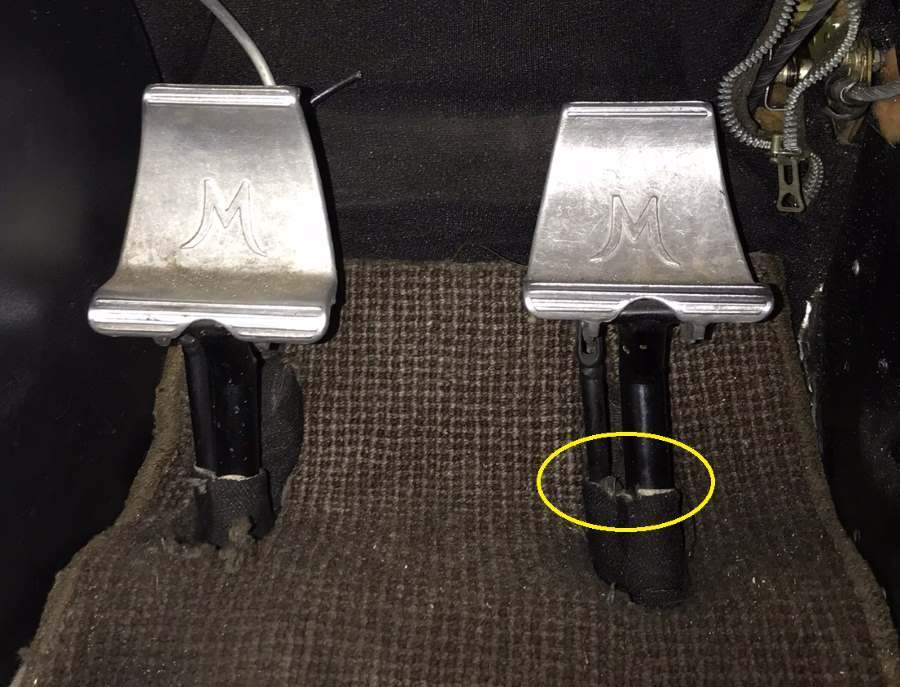Leaderboard
Popular Content
Showing content with the highest reputation on 11/18/2024 in all areas
-
5 points
-
Telephone cables, especially old telephone cables have lots of problems when they get wet. Some of these cables that are still in service are well over 100 years old. the conductors were textile and paper insulated with a lead sheath. The lead sheath will corrode and get holes in it so they pump them up with dry nitrogen to dry them out. they need the bottles because they leak. If they keep positive pressure on the cables, it pushes the water out.2 points
-
BAY15s base (single contact, dual off-set retainers) Exact replacement for Grimes/Whelen/GE incandescent reflector bulb Looks like a good replacement part to me. Note: This bulb is a standard 75/12 replacement for any Grimes, Whelen, AeroFlash Wing Tip Light Assembly. This also looks like a good replacement part to me. IMHO, these are small standard parts that fit in the standard BAY15S base. From FAA Part 43 Appendix A, under "Preventive Maintenance": (17) Replacing bulbs, reflectors, and lenses of position and landing lights. In other words, you can do that yourself. Just make a maintenance entry in the airframe logbook that is consistent with FAR 43.9, using your certificate number and type (e.g., 1234567 Commercial Pilot), and you're done.2 points
-
2 points
-
Well, at a certain time in the life cycle of the Ovation I guess our birds came with 0401.34 installed right from the factory. And those who were built before .34 eventually (most) got upgraded. If your tech is not familiar with the software revision history I would dare to ask if he is familiar with this particular software at all. But that also might mean he is not from a MSC since they have access to all the firmware documentations as well. Ask him if he has the boot loader upgrade for the GMU44. It is not part of the .34 software package. And without that you will not have a functioning compass any more.... And in case something goes wrong with the upgrade, ask him if he has the Bootloader downgrade files for the GMU44 as well... Going up from .30 to .34 is a lot of fun... and going back down even more so... Installation is actually quite easy and straightforward. However there are some precautions necessary, e.g. you need to write down (or just make photos) from a few config items before you start or you might be SOL when the new software is installed and you try to figure out which config item goes where. (Ask me how I know LOL). I would suggest taking the Ovation to someone who is familiar with G1000 Mooney firmware updates. Two hours and it's done. Just my $0.02 And just in case, here are some instructions from Mooney.com: https://mooney.com/wp-content/uploads/2020/12/SBM20-305B.pdf Best of luck and happy landings Graf2 points
-
apologies, wrong lingo. Thanks for the clarification. I was referring to the aileron trailing edge which can be bent. Still learning all of this, new to plane ownership and Mooneys. Edited above post to avoid confusion to others.2 points
-
The problem with this kind of thinking is that all of us have finite limitations on the amount of time and money we spend on "safety", and those resources often wind up being misdirected. Consequently, the most important risks aren't mitigated, and the rate of maiming and death stays about the same. Scientifically, this is borne out in accident data. CFIs who enroll in a FIRC every two years get data jammed in our face about it. The rest of the pilot community could benefit from at least a casual look at it. AOPA does a good job with their annual McSpadden report. Here's a link to the data from 2022, which is the most recently compiled year: https://www.aopa.org/training-and-safety/air-safety-institute/accident-analysis/richard-g-mcspadden-report/mcspadden-report-figure-view/?category=all&year=2022&condition=all&report=true Anecdotally, in my neck of the woods, some of the biggest risks to the aviation community are the aircraft with $100K of avionics, flown by pilots with so little recent experience that they can barely keep the greasy side down, and have almost no ability to really grok where other traffic is in the pattern (or the stack, or the airway, or whatever). Imagine how much better things would be if those pilots kept their airplane on the flight line instead of in the avionics shop, flew more often, and spent a few bucks on training with the local CFIs, or even just flying with more experienced friends. But this seems to be a loser of an argument, primarily because humans are terrible at data analysis and risk management. For better or worse, those folks really believe their big avionics upgrade was a great investment in safety, and scoff at others who are less-well-equipped as being "too cheap for aviation". Those pilots aren't going to read the McSpadden report; or even if they do, they think it doesn't apply to them. So yes, I do think "all of the other safety precautions we routinely take to mitigate small risks" are often inappropriate. Not because it's wrong to mitigate all risks, but because we live in the real world where no one has infinite time/money/energy to actually mitigate all risks. If you can't mitigate all the risks, you should focus your time and attention on the biggest ones. That requires the curiosity to actually look at the data, and the humility to accept that you are not somehow a special pilot, whose risks are different than average.2 points
-
@EricJ That procedure sounds horribly risky and the businesses that are putting profit over safety and should re-evaluate their culture regarding safety. I recommend that they talk to the FAA to help them come up with a better procedure or work within their organization to come up with a better procedure on their own. Some ideas: Hold somewhere else. Limit training flights that are using that ILS approach like ATC uses flow control at major airports. Perform training flights somewhere else. There are several other airports within 75NM that have precision approaches. Flight Training Devices are also quite effective and can be used to reduce the amount of time a student must fly to gain proficiency, particularly for IFR. That being said, when we look at the main causes of accidents at a national level, here is how they tend to stack up, and given your situation, what I think your relative risk is: Loss Of Control, Inflight You are at high risk for this. Flight training requires performance maneuvers, ground reference maneuvers, and stalls. VFR into IMC You are at low risk of this in Arizona. Fuel You are less likely to have this in a school training environment because almost all flights are < 2 hours and students tend to be diligent about checking before flight and there are no pressures to find cheaper fuel and the additional 'cost' to get fuel added before a flight is minimal. Maintenance You are at elevated risk of this since the pilots are all flying different planes and can't tell what has changed between flights in the same plane. Using the planecrashmap.com website, I looked at the 50 closest accidents to the VOR, and of the two accidents that I found that are mid-air collisions, one looks like aerobatic maneuvering in formation: https://planecrashmap.com/plane/az/N64WD/. and https://planecrashmap.com/plane/az/N2766C/. (Two planes involved, of course. This happened in 1989) and the other looks like training flights: https://planecrashmap.com/plane/az/N4184M/ and https://planecrashmap.com/plane/az/N8115Q/ (Two planes involved, one with a Portable Collision Avoidance System (PCAS) unit, this is from 2012) So even given your situation mid-air collisions are not a major source of accidents although due to your environment you have probably mostly eliminated two of the most common accident causes (Fuel and VFR into IMC). If you want to increase your safety by spending money on hardware, I recommend two things before buying ADS-B: Accurate fuel gauges and a fuel management system. An AoA indicator. Now I'm not saying you shouldn't also have and use ADS-B, but we should be honest with ourselves here that the risk they are mitigating is small compared to others that we are not mitigating, but could, and for less money. It is therefore weird that people focus so much on ADS-B to mitigate the risk of mid-air collisions. It's like a smoker who is worried about leaded gas from a nearby GA airport. Of course I'm not saying that all of the other safety precautions are inappropriate. But I am saying it's inappropriate to fixate on a lesser risk when there is are bigger risks that can be mitigated for less effort. Like when overweight guys spend thousands of dollars to buy bicycles that are 2 Oz lighter... They would be so much better off if they spent that money on a personal trainer or nutrition coach. I agree that it is a higher risk in your operations than in mine. But still smaller than other risks we both face and fail to mitigate. I'll quote @Aaviationist here:2 points
-
I've heard that before. I find it hard to believe ATC is letting IFR traffic self-separate using ADS-B only with vertical spacing of 500 feet. Can you tell me exactly where this happens and some times I might be able to see this on FlightAware so I can see it for myself? The rate of mid-air collisions has not changed significantly since ADS-B adoption has increased significantly. The rate of mid-air collisions is very small, and even out of those things that might kill you as a pilot in an airplane it's quite small. So why is it that you think this is such a large risk when it is in fact so small? And why do you fixate on ADS-B being a 'solution' to this problem?2 points
-
Agree also. You are above a lot of the weather. You are above most pistons and below most turboprops. The air is generally smooth. In most parts of the country at these altitudes you generally get just about anything you ask for from ATC.2 points
-
I would disagree with this. Down here we live in some of the most crowded airspace in the country. ADS-B helps me immensely in managing traffic, including very close traffic. I regularly fly as a safety pilot in "the stack", which very often has instrument students and others stacked in a hold every 500 feet from about 4000 to often 7000 or 8000 feet, in uncontrolled airspace managing separation only by self-reporting using an ad-hoc protocol. Conflicts are not unusual, and it'd 1000x harder (or at least more stressful) without ADS-B-in. You're in a small space with multiple diverse aircraft separated vertically by a maximum of 500' and often (or even usually) less than that due to inattentive students or incorrect altimeter settings or whatever reason. I was there a couple weeks ago in the stack with two helicopters, a King Air, and some other single engine recips. One of them, which wasn't one of the local large flight school airplanes, kept maneuvering into our altitude. Since we were maneuvering to maintain the holding pattern we could not always keep them in sight. ADS-B-in was the only reason we were able to maintain situational awareness with that traffic and the others. I won't go in there without functional ADS-B-in because the collision risk is just too high without it. Many of the uncontrolled fields around here often have a lot of traffic in the pattern due to flight school overflow from other fields. The risks are real. It's been a while since we've had a mid-air collision around here, though, I think the last ones were not long before ADS-B came into common use, which I think is notable and likely causal. Edit: I take that back, there was a collision between a flight-school helicopter and a flight school airplane in the pattern at a Class-D field here a couple of years ago.2 points
-
2 points
-
I like ADS-B too. It is helpful. But we should be clear that the risk it's helping to mitigate isn't a very big one to begin with. The system was not designed to help mitigate the risk of mid-air collisions, it was designed to help with the cost of ATC RADAR maintenance costs. It's not that ADS-B is worthless or useless, but the reduction in risk it provides is minimal. Maybe think of it like this: Looking at your ADS-B is about the same level of accuracy as getting a report from ATC of other traffic when they are not seeing you directly but using RADAR. If you are in the traffic pattern, it's effectively useless. Like when ATC says "Airport is at 12 O'clock, 10 miles, multiple targets in the pattern, report airport in sight." Once they are done with that, it's up to you and your eyes.2 points
-
I agree with this 1,000%. The real sweet spot of the acclaim is 13-18k. I have been higher than that many times, but usually it was an atc directive, or a weather imperative. The vast majority of time the best economy and speed to be had is between those altitudes. That isn’t to say that more speed couldn’t be had higher, just that the risk vs reward isn’t really there, be it safety or efficiency. My opinion is predicated on close to 1,000 hours over five years of flying all over the country at all times of year. I would be interested in hearing others opinions on this topic.2 points
-
No not on a 231, with a manual or fixed watergate. Full power is redline MAP and RPM full rich. But it is full throttle on engines with a hydraulic wastegate and controller to maintain redline like the 252, Encore, Bravo and Acclaims. Sent from my iPhone using Tapatalk2 points
-
Great writeup jlunseth thank you I think I can add to this discussion. I have an 81 231 with a GB, fixed waste gate, no intercooler, and 1961 hours since new. I purchased the AC in 2010 with 1200 hours and it had two cylinders swapped out in that time. In the 761 hours that I have put on it, I replaced one cylinder due to a crack in the exhaust port that started at a void in the aluminum that was the stress pint to start the crack. I have always taken off at full power and climbed to cruise altitude at full power. Full power adds the extra fuel to aid in lowers CHTs in the climb. If you pull back to a cruise climb you will not get the extra fuel added for cooling. Fuel is cheaper then and top overhaul. With in the first year, I installed a JPI830, and I believe that for my AC the 830 is required equipment. It is just too easy to overheat the engine with the single point factory installed instrumentation. Can you keep a GB cool enough to get to TBO, yes. How to do that, well you need a little luck that the previous owner didn't hurt it too bad. If there is an engine analyzer on now grab the historical data. The LBs have a larger opening throttle body and the front intake tubes from the throttle body to Cyl #5 & #6 are a different part number and i believe they have a larger ID. I believe that both larger IDs must be to reduce the restriction is air flow. I reason I say it this way is that I have heard on this forum that LB run cooler, and I have a list of the GB to LB differences, but I have never seen an explanation from continental as to why these changes make the LB run cooler. At overhaul mine will be converted to an LB. I am blessed that I am the A&P/IA for my 231 and I am an engine guy. Back in the day I have overhauled >500 GA engines and maybe 30ish TSIO-360s, I have set >1000 Continental fuel flows. To dos: Engine baffle seals must be tight with NO leaks. All cooling air must go through the cylinder fins. You can have these replaced with new seal material. Fuel flows must be set correctly by a mechanic that in experienced with fuel flows. To set the fuel flows correctly I first ultrasonically clean the fuel injectors to remove the buildup on the metering orifice, once the injectors are reinstalled, I pressurize the intake and exhaust system with the pressure side of a clean shop vac to look for leaks. I spray soapy water to find, and leaks and I fix any leak. Now I set the fuel flows with a reference to SID97-3G low unmetered fuel pressure to at 700rpm to 6.5 +/-.1psi and at full RPM(2700) and max MAP(~40ish) the metered fuel flow of ~26.7gpm and this gives me ~1400df TIT. You can see that the metered max fuel flow I use has the added 1GPM to aid in reducing the CHT in full power takeoff and climb. I first heard about the added 1GPM from kortopates on this forum. This is the best single change that I have made to keep my engine cool at high power. (SID97-3G TSIO-360-G, GB 700 2700 40.0 6.25 - 6.75 45.0 - 49.0 16.7 - 19.3 135 - 145 23.0 - 24.7) I would recommend that you use Savvy to review your engine data. They do a great job giving input as to what areas need to be looked at. Enjoy Jim2 points
-
I purchased an M20J this summer and have put 40 hours on it thus far. It has always banked left in cruise and the purpose of this thread is to journal the process to address and rectify the issue (ongoing) The issue: hands off cruise the plane starts banking left within 1-2 seconds and within 10 seconds the plane will be in a 15° left bank. Furthermore: stall practice has me hesitant as it consistently seems to want to drop the right wing. My reasoning tells me this is from the relatively higher AOA of the right wing needed to fly my plane straight into a stall, but I could be out to lunch on that. Diagnostic work thus far: I flew today for the purpose of evaluating the issue further following the flight test guidance found here: https://knr-inc.com/shoptalk-articles.html?view=article&id=75&catid=25 Conditions: just me in the plane (but it behaves this way with a passenger as well), full tanks (burning the left side first), 8500ft, WOT, 2500 RPM 8.5 GPH 117 KIAS Wings level test (using just aileron): turn coordinator ball slightly to the right of centre, just peeking past the white line. Wings level and ball centred test (used right aileron and right rudder to level wings and centre ball, then released aileron and kept rudder pressure): still banks left but not as dramatically as without rudder correction. In wings level cruise I will say that I *think* I could appreciate a slight positive angle upwards relative to the flap on the left aileron but tough to say for sure. So- my conclusion is that my plane is out of rig and both the left bank and yaw both need addressing. My mechanic is excellent, and I am confident he will be able to rig the plane, only thing is that he does not have the Mooney travel boards. I have read literally every thread on here about travel boards and rigging, so I feel that we should really try to get these to be confident in the static rigging before we start bending servo tabs. We are working to source them. I live in Alberta Canada which makes things more complicated if needing to source from the USA. I will keep this thread updated with my progress and experience with rigging my J partially as a place to journal my thoughts and also to help future riggers! James1 point
-
You are absolutely correct. they have mostly been replaced with newer technology so they don't have to maintain those ancient cables any more.1 point
-
@wombatonce again in this thread you are twisting words. I did not say ADSB was the answer to solving in air collisions. I DID say that ADSB having been available in both accident aircraft in a SPECIFIC example most probably would have had an impact on the outcome - which I believe to be true ADSB is a potentially life saving technology and is an excellent if not crucial tool in understanding the current status of an airport environment. The more aircraft that participate the more useful that tool is, and becomes. it’s a tool and technology that helps protect both you AND me, and to not be ADSB out equipped at this stage in the game be it to be a CB or to save a few bucks, is a disservice to you and everyone around you.1 point
-
No I don’t have any kind of proof, and won’t because I really not that interested, but it is logical. I have never seen it installed permanently, only when they are doing work, and even then I’ve only seen it very rarely, haven’t noticed it myself in years. I had a friend now gone that started out life working for the phone company that told me. That’s not “proof” of course but it seemed logical to me. He was the Dean at the A&P school in Americus Ga. started out teaching Avionics there years ago. He also told me that Bell telephone was the first to use a Solar Panel in Americus Ga. The first practical test of one in 1955. He was sort of a telephone and electronics Nerd. I have no idea what a SGOT is OK a simple search of “does the telephone company purge cables with nitrogen” turned this up. Granted this is power cables, but I’m sure if I kept looking I would find it applies to any buried wire conductor cable even TV cables. https://www.tdworld.com/intelligent-undergrounding/whitepaper/21165280/respond-rectify-and-restore-underground-electrical-systems1 point
-
No, the smaller tanks only have one inboard sender each. The larger tanks (e.g., 64 gallons+) have an inboard and outboard sender, since the inboard can't reach far enough to measure the entire tank and still reach the bottom of the inboard part.1 point
-
Given that Nav lights have FAA regulations, seems like the best option would be either stay with current type of bulb vs spend the money on an approved LED solution like the WAT Orion series. Otherwise the good person to ask would be your IA doing your annuals; they may feel strongly one way or the other about LED bulbs in a standard fixture. https://flywat.com/collections/mooney-products1 point
-
My understanding is that it comes directly from Garmin because a dealer has to request or sell.1 point
-
I've always been a Mac user (well at least since 1992) and I've used Jepp data in all of my units (GNS and GTN) and never had an issue with Jepp support for Mac. In recent years I used the Jepp app on my iPhone with a Wombat to program the datacards (before getting my FS510) and that worked incredibly well. I wouldn't have any fear of Jepp data sewrvice from a Mac.1 point
-
We should all keep in mind that a deficiency with a pilot/person shouldn't necessarily be blamed on the technology. The Technology is separate from the Interface which is separate from the Person. The broad brushstrokes in this thread discount the nuance for the extreme (all good vs all bad). Good technology with poor interface can have a bad response even with a good pilot. Good technology and solid interface can have a poor response from a pilot without sufficient training or ADM. All ADS-b solutions are not equal and shouldn't be lumped all together as we discuss where the fracture lines exist with technology. Proper training with any form of aircraft equipment is paramount. Poor training or education shouldn't immediately be blamed on the technology.1 point
-
This is a great question, and I think it's really the crux of the matter. It's certainly the reason why I tend to get my hackles up about this stuff. An aircraft that is "near" certainly presents more risk than one that is "far". But my experience flying with a lot of other pilots is that many of them are unable to appropriately internalize what actually constitutes "near". A comical example of this - but an honest-to-god-true-life-story - is a pilot I flew with whose display showed no threats at a particular time during the flight... so he kept zooming out until he found one (any aircraft looks "near" if you zoom out far enough). Then he got fixated on maneuvering to avoid this wildly distant threat, instead of paying attention to something more important. This resulted in him basically losing control of the aircraft (uncommanded attitude change under the hood) while trying to figure out what direction to turn to avoid an aircraft that was multiple minutes away (and likely was going to turn away from us anyway). That's an extreme example, but I see variants of this quite a lot - pilots who are very concerned about midair collisions, who spend an inordinate amount of time looking at traffic displays trying to analyze threats that are objectively tiny, to the detriment of managing other risks. It turns out there's a pretty narrow range in which traffic displays actually help. If you're 5 seconds from a conflict, they're unhelpful because they tend to indicate bad position data, just like @MikeOH noted above. The delays in the ADS-B network are indeed very small, as the reference posted by @Aaviationist indicates. But that study ignores delays in the display device (maybe a couple of seconds for a Bluetooth-connected iPad which is the most common setup), and delays in the pilot's scanning of said device (maybe very large). At the other end, if you're more than 60 seconds from a conflict, the information just isn't relevant - you don't actually know if there's a threat, and the best course of action is to just keep doing whatever you're already doing. If I had my way, no traffic display would be capable of zooming out beyond a couple of miles. In the narrow range between "too far to care" and "too close to help", ADS-B traffic displays are really helpful when used properly, and all the arguments extolling their virtues make sense. Airplanes in the same traffic pattern or holding stack with you fall into that range, and people pointing that out have a strong argument. But it's worth noting that's also when all your other risks unrelated to traffic go way up. I flew with a pilot earlier this year for an aircraft checkout who was incapable of maintaining pattern altitude and appropriate heading and airspeed on the downwind leg of the traffic pattern, because he was completely heads-down on his iPad, and terrified of a couple of other airplanes trying to work into the pattern. That's just a single anecdote, but again, I fly with a lot of pilots as an instructor, and I see a lot of variations on this basic mismanagement of airmanship. One thing that would help is if the industry could put together an AC on how to effectively use traffic systems. Today, there's just an assumption that the way to use them is "obvious", and that's a lot of what all the arguing is about. One of my fellow flight instructors wrote a great article in the NAFI Mentor magazine about this. I don't have a link, because it requires a subscription. But the gist of it was to define certain ranges to the threat, and appropriate actions to take in response to threats in those ranges. Outside a certain range, no action is warranted and there is no value in paying attention to the threat. Once a threat moves inside a "noticeable" range (30 seconds or so of closure), a single, predictable, course or altitude change may be warranted before visually acquiring the target - especially if that change actually helps you and the threat acquire each other visually. But if the target moves inside a "critical" range, blind maneuvering is as likely to cause a collision as it is to prevent one, and the best action is to maintain course and altitude while working especially hard to visually acquire the threat, perhaps to the extent of paying less attention to your usual fly-the-airplane duties. Only after visual acquisition is maneuvering appropriate inside this range. Everyone is free to disagree with this strategy, and would be even if there was an AC. But @EricJ is asking a really good question: not if ADS-B traffic data is helpful, but when. Especially relative to other risks.1 point
-
Seems like extreme stances either way are the issue here. There are times when you should be eyes outside (I.e. landing) and times when your eyes are helped inside on the instruments (I.e. IMC). Effective safe flight is a combination of the two at the right times. I use an Aera 760 on traffic page when I’m close to practice areas and the terminal environment. My iPad zoomed in to the airport shows a quick glimpse as to how many targets in the area to better predict the safest way for pattern entry, runways in use, and if now is a good time for that practice instrument approach. All things I wouldn’t have without ADS-b. But some aircraft don’t have ADS-b, and some that do, aren’t working. So it’s important to me to use all the tools in the bag and understand the benefits and limitations of the tools I use. Personally I find value in ADS-b in and out. I’m glad when other aircraft have it and wish more of those who don’t, would use it. But even if it was 100% adoption, nothing is perfect and neither are eyeballs. See and avoid isn’t using one tool…its wisely and timely using a combination of the all the tools available. The view out our windows are small and have huge blind spots. ADS-b can start to fill in some of the blanks in our eyeballs and blind spots, but it has never been an either or but rather both.1 point
-
That's a nice trip, I hope you enjoyed some sun in Biarritz ! It was sunny in Cannes, while flying north I managed locate that one single valley and mountain near Gap that stops the fog from going south, it did looks like a "fog dam" trying to hold it As you see the fog we get from Geneva (as you see it's always someone else fault in France: we get weather from UK and Switzerland ) was flowing in Rhone Valley with northerly winds and it was about to spillover toward Cannes1 point
-
Just finished up a METAR map for my local area (image attached) and seeing if there's interest from other people if I start putting these together and sell? Would be custom maps for your area and sizes could range from: 5x7, 8x10, 11x14, 16x20, 18x24, 24x36. Number of led lights would range from 10 to 100 depending on size and density of area. Pricing is estimated from $100 for the 5x7 to $500 for the 24x36 which includes shipping but no frame. It's a pretty slick setup and a light can be added to any METAR reporting airport https://www.cnrfc.noaa.gov/metar.php. Green-VFR, Blue-MVFR, Red-IFR, Pink-LIFR, Yellow-Windy and you will need wifi coverage so the map can constantly update. There are some custom settings like the threshold to indicate windy (over X KTS), set a time to turn LEDs off and back on, indicate lightning, and indicate icing. If you're interested just reply here or send me a private message and if you know what size, include that too. Right now, gathering interest to see if we have enough people to make it worthwhile and if so, I'll reach out to you through MS via PM. Thanks!1 point
-
I have been nicely surprised with the TSIO-360-LB. I have had two of them. The first made it to 2400 hours before overhaul and it could have gone way longer. It was topped at about 1000hours before I flew it. Then in 2018, I put a TCM remanufactured engine in the airplane and now have over 1000 hours on it. The only significant work on the engine was I refurbished the #2 cylinder because of really low compression. I run the airplane at conservative values: 31" x 2450 RPM and no more than 1500 TIT. I will run the airplane LOP if I have time to spare, but usually at 28" x 2500 rpm and I lean it to 1500 TIT - sometimes as high as 1560 - 1580 TIT.1 point
-
Good news, Gary at Main Turbo said around 3-4 day turnaround on an overhaul. Now to get it pulled and shipped. video of the turbo: https://www.dropbox.com/scl/fi/yw6nzz18n8felkpol1dtb/IMG_4433.mov?rlkey=1sv01x126mbx2sjuydg1w9ork&st=9qc3qxl8&dl=01 point
-
My plane had had a prop strike before I bought it and the required tear-down. They had the shop pretty much do an overhaul and tried to sell it as XXX SMO, but the logs didn't have the signoff. So I ended up getting a good deal. But at around 1700hrs I had an issue with a piston pin plug. Sure, I could have delt with the one cylinder, but figured with that time, even with the earlier work, I was not sure if I was going to be tossing money into the engine. Current engine is at 1500hrs and still going strong. I did have one cylinder burn a hole in the side around 1100hrs, so replaced it. But otherwise no issues and hope to get to or beyond TBO. The one thing that may change that is how long it currently takes to get an engine. I'm going to be watching closely to see if the parts and shop availability gets better or not. But as I get closer to TBO I may just get on the list to either have my engine rebuilt to get a factory reman. Then when my date comes do I'll make the change. The other option is to suddenly have an issue and just then start the waiting period for the engine I know I'm going to need in the not to distant future.1 point
-
I utilize high quality SANDISC 32GB SD cards. No problems so far. I use a separate SD card for NAVDATA updates only. If NAVDATA is placed on the same SD card as checklist/flight data, the MFD with .37 installed will ask you if you want to update NAVDATA on every boot process. This is kind of annoying..1 point
-
The traffic at "the stack" is not IFR. ATC is not involved. It is typically IFR training flights or proficiency/currency flights with either instructors or safety pilots. This happens over the Stanfield VOR (TFD) to shoot either GPS, VOR, or ILS approaches into Casa Grande (CGZ) runway 5. The protocol is pubished here: https://aftw.org/wp/wp-content/uploads/2021/05/AFTW_Stanfield_VOR_Procedures_Rev6.pdf Many, if not most, of the safety precautions we take as aviators are to mitigate risks with very small (and sometimes very, very, very small) probabilities, but significant consequences. This one is no different. I hope you are not suggesting that all of the other safety precautions we routinely take to mitigate small risks are inappropriate. I do not think it is a large risk, although I think it may be larger in the airspace that I fly than in some others, and I also think it not outside the usual order of risk magnitude that we routinely mitigate with similar safety measures. I also think that for many of the "small risks" we take as aviators we use many tools to mitigate them, especially those with large consequences. You'll have to forgive me if I extend those practices to avoiding mid-air collisions as well. I don't think I've ever heard anyone serious, here or elsewhere, suggest that ADS-B is a solution to mid-air collisions. I've no idea what makes you think I think so or that I am "fixated" on it being so.1 point
-
UGH, I tried to stay out of this one, but I can't help myself! 1) ADSB was NOT designed to be an active traffic AVOIDANCE system (i.e. NOT a TCAS substitute) 2) I have personally, on multiple occasions, observed MAJOR discrepancies between reported position and ACTUAL position of traffic (see number 1) 3) It is another tool in the toolbox. It is not, IMHO, a necessary tool, but can be useful as a strategic tool. I like getting the 'lay of the land' when approaching an airport and appreciate the 'big picture' it provides while in cruise. 4) No way I would use it for tactical use in a traffic pattern. It is NOT reliably accurate (see number 2). Doing so, again IMHO, would be providing a false sense of security. I want my head on a swivel looking OUTSIDE, not managing the distraction of 'head's down' time while in critical airspace like a busy traffic pattern. However, as others mentioned, having a second person monitoring the ADSB display is also useful. 5) Looking at factual accident data shows mid-airs are way down the list of fatal accident causes. I await some statistical proof that those numbers drop even further before entertaining that a cause/effect relationship has truly been established. Anecdotes and the absence of an accident in the last x years when mid-airs are so infrequent to begin with is not convincing.1 point
-
First of all, these things were rigged correctly when they left the factory. The stall strips were put on with duct tape and after a couple of flight tests to get the position correct for stall with wings relatively level they were riveted in place. Unless the airplane has been damaged, the rigging shouldn't change. But what happens is that people mess with them over time and get the rigging messed up. You can check a few things yourself per the KNR article. If it's not right the best thing to do is to take it to a Mooney Service Center that has done rigging and has the travel boards and have them set it up correctly.1 point
-
Thats just two sad reasons to lose an airplane, however im glad he wasn’t hurt.1 point
-
There’s a good rigging article out there too… ill see if my google skills are up to the test… found it! https://knr-inc.com/shoptalk-articles.html?view=article&id=106&catid=251 point
-
I was going to say- shouldnt the gear motor turn back on if that "gear up" lights goes out, and pull it back in? Glad you found the ghost!! That must be a relief. That plane is way too pretty to be slow1 point
-
Just curious on the setup for a 231 (TSIO 360 LB) with an intercooler and a Merlyn wastegate. I take off trying to hold the MP to a maximum of 37 inches / 2700 RPM then pull it back to 2600RPM, however the MP has crept easily to over 42 " where I quickly pull it back to 37". First question: Is this the proper way to run this engine per MP and RPM and what should the fuel pressure be at 37"? Second question: Is there a way to control MP other than the throttle? Steve1 point
-
Had an epiphany late last night and confirmed the issue today after replacing a failed aircraft jack. It seems that the main gear shock discs are worn out enough that the weight on wheel switch can make contact when the gear is in transition in flight and with a wind load pushing the main tires back. This is causing the gear to not fully retract after takeoff, but is not a problem when on jacks. While retracting today, pushing on the tire causes the gear to hault retraction. Time for some new shock discs…. Sent from my iPhone using Tapatalk1 point
-
service life yes, but capabilities, not really. esp given how most ga use these products direct direct done heck even flying approaches and complext flight plans, they function substantially the same. to be honest, i'm experiencing buyers remorse right now, i replaced my gns480 with a gnc 355a, it's prettier but except for flight plan transfer from the ipad, does nothing the old unit couldn't do. actually the old unit had a few more features( ignoring vor ). also consider the units will only be ran for maybe a thousand hours over 10 years, you could probably get buy with used while watching the new stuff go obsolete1 point
-
That's a big one. It helps you know where to look as a conflict approaches, so that you can visually maintain separation as it gets closer. It'll help your scan skills, since you know something is there. Many times you still never see it, so it teaches you that depending on your eyes is not sufficient.1 point
-
Did you check the boots around the rudder/brake linkage boots? The leakage could be coming from right around your feet. Even in good condition those cannot seal very well because there are two rods with the brake rod moving up and down as the entire linkage moves fore and aft. (see the first 2 pictures.) The last 2 pictures are an Ovation boot salvage at Dawson. You can see the hole in the boot where the linkages protrude forward.1 point
-
This is just my philosophy and if you disagree I will not be the tiniest bit offended. I very much like the adsb traffic depiction technology. Today while climbing out of KAIZ heading southwest, the glare was terrible. I did not punt to the technology, as has been pointed out ad nauseum, the technology has limitations. But I do have a lovely bride sitting next to me that is very useful locating the little arrows on the iPad while I diligently continue my outside scan. This works well for me. She warns me of something and then I can scan in the appropriate direction. This has helped numerous times. At least 2 or 3 times just today. Frankly fellows, it’s just silly to pick one side or the other and then attack your fellow Mooney Spacer. The technology is a help, not a silver bullet, but it is a big help. Outside scanning is vital but it is not the enemy of adsb, and adsb is not the enemy of scanning.1 point
-
More likely ADS-B and ADS-B fixation CAUSED this accident. People who don't understand what the system is and what it does are part of the problem. There was a radio call telling them where the other aircraft was. So they decided to keep flying towards danger and one person decided to stop looking outside and look at his iPad instead. And as @Hank says, ADS-B was not designed as a safety tool, it was a cost mitigation tool for the FAA so they could decomission some RADAR facilities. If they had wanted to mandate mid-air collision avoidance systems in aircraft, they would have mandated TCAS installs. Now don't get me wrong (although I expect you will anyway). ADS-B can provide some additional safety if used correctly. But this was not a correct use of it. Wow, it's amazing how almost everything you say is completely wrong. #1: I'm sorry, but you are the one that fails to understand the capabilities and limitations of the system, as well as mis-understanding the circumstances around this accident despite it being clear in the NTSB reports. #2: No, the pilot best positioned to see the Swift airplane was looking down at his iPad. #3: No, you are wrong again. If it matters, the airplane I fly most has ADS-B: (GTX-345R, 1090es out and 1090es and 978UAT in) and displays traffic on my G500, GTN-750, and iPad. The other airplane I fly frequently has ADS-B as well: out (uAvionix Trailbeacon 978 UAT) and in (Stratux, 1090es and 978 UAT) #4: What part of "the increase in safety by spending the same amount of money on other equipment would be higher than if we spent that money on additional ADS-B" is not coherent or logical? And as I addressed in (3), you are wrong about my personal choices on equipment. I'll also ask you to provide some substantive information to back up your claim I misused the system. The same with your statement on my impact on safety. Feel free to come to my home airport (2S0) and ask around to other pilots about what they think my impact on GA safety is.1 point
-
Yes it’s easy within Schengen+EU as no immigration & customs are required * In southern countries like France, Italy…the flights are still “international” one still need to file mandatory flight plans, possibly gendec, make radio contact at borders…as these countries puts ICAO requirements above Schengen/EU laws, however, this is merely an ICAO reporting requirement: no restriction on where you can land and you don’t have to see anyone. * In northern countries like Germany, it’s easier as Schengen/EU flights are considered “domestic or national” (sub-ICAO): I flew Belgium-Germany-Austria without flight plan not talking to anyone except airport guys, this sounds more like “just go” UK (and Switzerland) need more planning: one have to comply with some immigration and customs rules like sGAR, these are not difficult once one gets used to them (it’s like eAPIS in US or Canpass in Canada) For fees (and Avgas), it’s manageable in small and medium airports in countries with light GA tradition Germany, Poland, France, Switzerland, Belgium…if you go to Spain, Italy…one tend to sick to private small airports while big airlines airports have pricy handling and are waste of time: imagine Signature price tag with bureaucracy and no red carpet. This is tough on GA flyers, you can’t fly north forever: you need to go south for sun, food, beach…1 point
-
1 point
-
My favorite discussion…. Always take the extra time to type a lot of extra details… just when you think they aren’t important… somebody is going to ask for them anyways… typical flight for my O3 powered O1… Take off… full rich, or blue/white box if using EGT method at higher altitudes MSL… climb… leaning above 3k’ or so… using the blue box, or white box if you are G1000 equipped. the boxes keep the EGTs within 2-300°F ROP… modern Mooney’s with IO550s have calibrated EGT gauges providing real data… Cruise… Above 8k’, the MP is too low to damage the engine… I typically run about 2°F LOP… ensuring all of the fuel gets converted to noise… Gamis are good… but, the io550 may already have a Gami spread of about 0.1gph between all of the cylinders… So… measure your gami spread first… the curvy intake tubes you paid for actually do something good! If you have the 310hp STC… climb out at 2700 cruise climb at 2550 cruise at 2550 Some people descend using a lower rpm… others will adjust the descent rate to maximize ground speed… while being cognizant of the maneuvering speed and bumps… going 50°F LOP has its limitations… use it when you need to, not because it is a good idea all the time. getting used to these ideas probably takes a year… getting to know a chart of data, then speeding your way through leaning procedures properly… Start with the blue/white box… Climbing LOP… nice idea, but too challenging to get right… with 310hp, your climb rate is 2k+fpm…you won’t be climbing for all that long… Best regards, -a-1 point
-
Greetings @Dreamscape and welcome to Mooneyspace! I've been on here for about a year, bought an Acclaim Type S shortly thereafter. Your aircraft questions feel familiar to me. You may find a couple of overlapping discussions in the archive, too; there was a related engine discussion a while back. Dan @exM20K brought up some concerns about the route(s), which occurred to me as well (though with much less knowledge than he [coffee trader, that's cool! I envision a Banana Republic ad from the 80's]). That idea of having a GA aircraft locally on the continent makes a lot of sense as a "split solution". Pressurization would help with comfort and fatigue on a long trip. My own look into this question (specifically with Malibus and P210's) kind of led to the same conclusion; it was asking a lot of the engine and adds a lot of systems reliability and maintenance concerns. On a tangent, the T210 might be a consideration though I am not really sure the 210's engine parts availability would be much better. Airframe parts, maybe, easier than Mooney. Anyhow, on your primary questions, Dan already made several main points, I would add: - to support your intuition, yes, I think both of these planes are in the "top band" of efficient, cost-effective commuting type GA solutions for regional travel in their price band (piston). At least in my experience, you can travel flexibly in the high teens or low FL's with pretty good speed and comfort. On well-known person in the community said "it's almost turboprop performance for piston prices" (he is a salesman, but a good one). If you're going alone, the range is shocking with even "standard" 100 gal tanks. - my discussions with owners and reading has led me to conclude that the TSIO-550G can achieve long service life with appropriate management (lower power settings, LOP). Surveillance (eg. checking monitor data, borescope, etc) will help a lot to prevent surprises. On the oil change question, several mechanics have advised me to do 50 hr intervals rather than 25 hrs. Again with keeping an eye on things. @Schllc has a lot of experience in this aspect, with several different Acclaims. - rotocoils are inexpensive to replace and not in short supply; AFAICT it's not like they fail that often, either - I am finally changing my two original cylinders at around 1480 hrs. The indication is "soft" and I had also addressed some problems with valve lapping/coil replacement previously. A couple of very experienced Mooney and 550 mechanics said it really was elective at this point. Not horrible service life. - random parts can be an issue but, talking to shops, the same thing is partly true for much more common aircraft when it comes to engines, common sensors, etc. I would think logistics and supply chain would be the issue in S.A., you could establish some relationships and possibly maintain local spares. - there are several folks here who've owned and flown both, they may weigh in shortly. - G1000 or no has been mentioned. Lots of discussion there, possibly a secondary question at this point unless you demand a six-pack. FWIW it is a very capable system that is thoughtfully integrated and is an easy point of display/integration for FIS-B, XM, and/or stormscope data. - I can't imagine you won't want TKS Lastly, if you'll forgive another unsolicited piece of advice (your intro implies you are seeking experience-based advice and what I would call "synthesis"): I would suggest you reconsider your risk calculus with regard to (A) significant negative effects of potential COVID-19 (SARS-nCov-2, specifically *current* variants) exposure on commercial flights vs. (B) composite risk of the GA mission you are proposing. I'm saying this as a physician who's practiced in different phases of the COVID experience, in terms of acuities, systemic approaches, etc, and with some knowledge of operational risk management in aviation operations. And with the caveat that I don't know you as a patient. It's probably not in scope for a longer discussion on this thread, but the low virulence makes individual health factors a dominant factor, just as with so many other diseases. I understand risk and fear are personal, I know people in the Midwest who are terrified of earthquakes and won't travel west, though they're more likely to die by slipping on the ice. And I'll never criticize you for flying because "it's dangerous", I'm just suggesting that if that's truly a major determinant, you might revisit it with a trusted physician advisor (not someone who will simply parrot CDC or Health Canada guidelines from 2 yrs ago). As a practical matter, if you're willing to fly the big iron down to S.A. you could use the suggested strategy of having a Baron down there. Respectfully, David1 point

